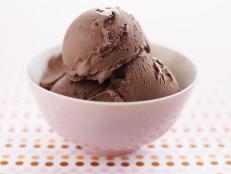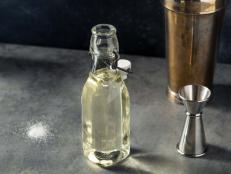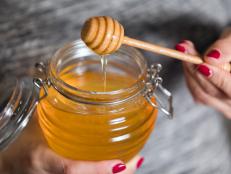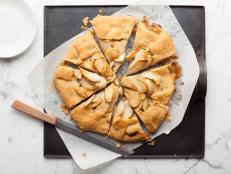Everything to Know About Low-Calorie Sweeteners
Alternative sweeteners can be up to 700 times sweeter than table sugar. These are the best ones for a variety of needs.

Peter Dazeley/Getty Images
Enjoying a sweet treat without the calories or carbs can be easy thanks to low-calorie sweeteners and sugar alternatives. However, with so many different types available, it’s hard to know which is best, especially when some newer sweeteners are making the options even sweeter. Here’s the scoop on which sweeteners work well in baking, added to your morning coffee, and which are helpful when managing diabetes.
What Are Low-Calorie Sweeteners?
Defined by the FDA, low-calorie sweeteners contain essentially zero calories and carbs. Because they do not contain carbohydrates, they do not raise blood sugar.
These high-intensity sweeteners tend to be several times sweeter than sugar. They can be used in hot and cold beverages, and most can be used in cooking, baking, and preserving. Here’s a summary of the FDA’s official overview, along with our notes on uses:
Acesulfame Potassium: Only half of the sugar should be swapped out when baking with this sweetener.
- Brand Name: Sweet One
- 200 times sweeter than table sugar
- Acceptable Daily Intake: 23 packets
Aspartame: It’s not heat-stable and cannot be used in baking.
- Brand Name: Nutrasweet, Equal
- 200 times sweeter than table sugar
- Acceptable Daily Intake: 75 packets
Saccharin: Only half the sugar should be swapped out when baking.
- Brand Name: Sweet and Low
- 200-700 times sweeter than table sugar
- Acceptable Daily Intake: 45 packets
Sucralose: Can be used in baking, but requires recipe adjustments
- Brand Name: Splenda
- 600 times sweeter than table sugar
- Acceptable Daily Intake: 23 packets
Luo Han Guo fruit extracts (monk fruit): Considered “natural” because it is made from a component of the monk fruit grown in China, this sweetener can be used in baking but requires recipe adjustments. It’s often blended with another sweetener.
- Brand Name: Monk Fruit in the Raw, Monk Sweet
- 100-250 times sweeter than table sugar
- Acceptable Daily Intake: NA
Stevia: Considered “natural” because it’s made from a component of stevia leaves, it can be used in baking but requires recipe adjustments. It’s often blended with another sweetener.
- Brand Name: Truvia, PureVia, Stevia in the Raw
- 200-400 times sweeter than table sugar
- Acceptable Daily Intake: 9 packets
Low-calories sweeteners can be effective in helping manage diabetes, especially when the sweeteners are used to cut the amount of carbohydrates in an occasional sweet treat. After all, people with diabetes, along with the rest of us like to enjoy an occasional sweet treat or a dessert a day!
Issues may arise when much of what we eat and drink is sweet, from our morning latte to sweetened flavored water throughout the day, to a nighttime snack. Using super sweet low-calorie sweeteners throughout the day can accustom our taste buds to very sweet foods. Some scientists think this preference may make us crave even more sweetness (i.e. sugar cravings). In addition, research is ongoing on how our brain reacts to this rush of sweetness, including the insulin response. The exception is stevia which some researchers have suggested may be a beneficial sugar substitute for people with diabetes.
What Are Sugar Alcohols?
Sugar alcohols are sugar substitutes, but are not considered low-calorie sweeteners because they contain some calories, about 1.5 to 3 calories per gram. (Sugar has 4 calories per gram.) Because they are not zero-carb, they do slightly effect blood sugar, but they are digested very slowly and thus generally don't cause an insulin response. They can be useful in managing diabetes and are also tooth-friendly.
Sorbitol: You’ll find this branded as Modernist Pantry. Sorbitol is used as an emulsifier in precooked pasta, butter flavoring and chocolate coatings. It’s not ideal for baking and may cause GI distress, but it can be useful in making homemade gummy candies.
Xylitol: Brands include XyloSweet and Pure Birch Xylitol. It’s found in hard candies, chewing gum, mints, ice cream, chocolate, cookies, and beverages. Xylitol doesn’t caramelize, so baked results won’t get golden, but it does measure like sugar. You may notice a cooling aftertaste.
Sugar alcohols have not been studied as much as low-calories sweeteners and frequent use might lead sugar cravings in some people. However, the main issue with sugar alcohols is that most of them (except erythritol) have a "laxative affect" just like natural fruit sugars, and excessive amounts may cause bloating or diarrhea.
What Are Novel Sweeteners?
Novel sweeteners may fit into one of the above categories, but they are new and unique. For example, erythritol is a sugar alcohol with the benefits of lower calories and without a sudden blood glucose response, and it rarely causes tummy issues. It’s also can be considered an antioxidant. Some of our favorite sweeteners are erythritol blends. Another novel sweetener is allulose which chemically is a sugar, but is metabolized differently and slower than sugar and may lead to lower blood sugar and insulin levels. Avoid excess amounts of allulose to prevent tummy troubles.
The following new sugar substitutes work very well in hot and cold beverages, puddings, dairy foods, baked goods, and fruit desserts.
Swerve: The ingredients are erythritol, oligosaccharides, and nature flavors. The oligosaccharides are a prebiotic fiber made from starchy vegetables that may be good for the gut. Swerve measures, tastes, bakes and caramelizes like sugar. Brown sugar Swerve version tastes remarkably like brown sugar. Keep baked goods tightly stored to avoid quickly drying out.
PureCane: This new sweetener contains erythritol, soluble fiber, and sugarcane Reb M (Rebaudioside M). PureCane is made in a unique process using yeast to ferment sugarcane; the company touts its sustainability goals and does not use bleaching agents. It measures and bakes similar to sugar and tastes most like white sugar of any sweetener we tried.
Wholesome: The only ingredient is allulose which is made by converting the starch in corn and wheat. Wholesome has 70% the sweetness of sugar, so use 1 1/3 cup in place of 1 cup sugar. The taste is similar to sugar. Baked goods caramelize like sugar and keep well since they hold moisture longer than erythritol-containing sweeteners.
Serena Ball, MS, RD is a registered dietitian nutritionist, food writer, and mom of five children. She blogs at TeaspoonOfSpice.com and is the author of the best-selling The 30-Minute Mediterranean Diet Cookbook, Easy Everyday Mediterranean Diet Cookbook and the forthcoming The Sustainable Mediterranean Diet Cookbook. Follow her @TspCurry on Twitter and Instagram.
*This article was written and/or reviewed by an independent registered dietitian nutritionist.
Related Links:
































